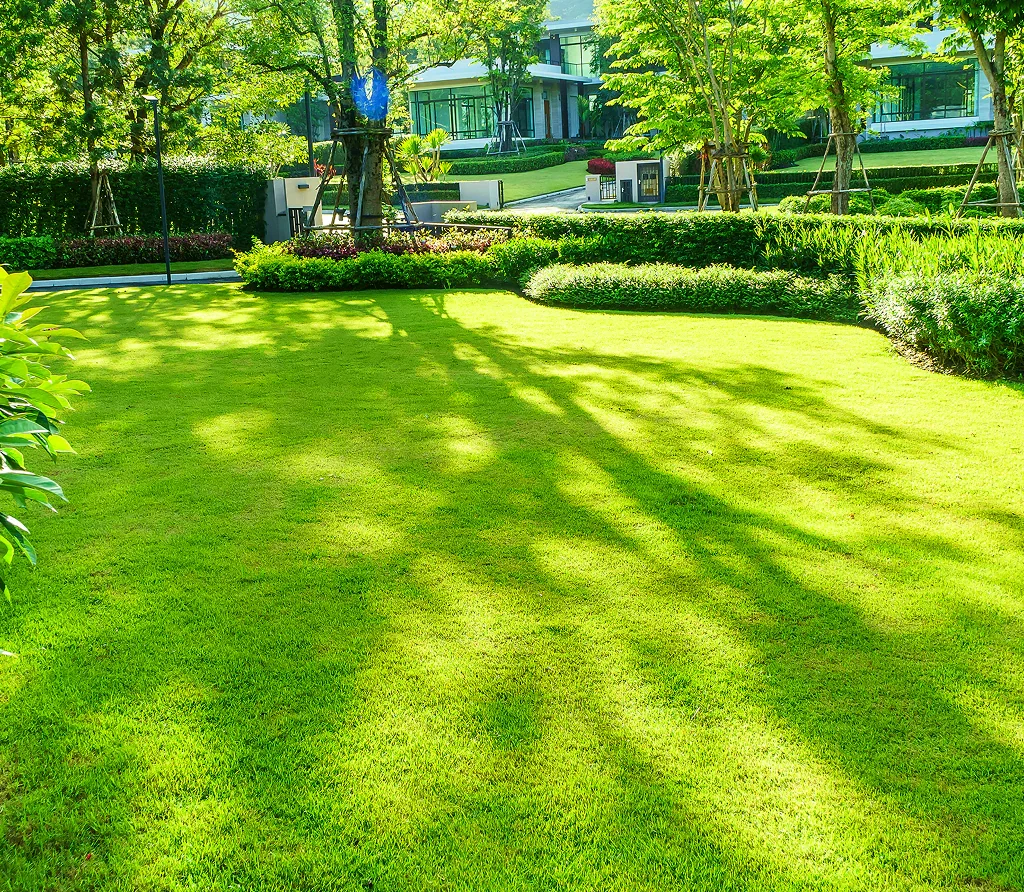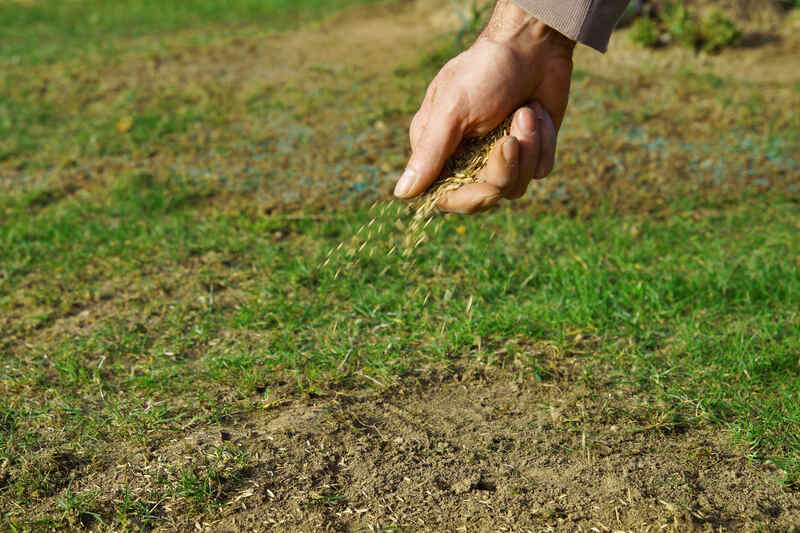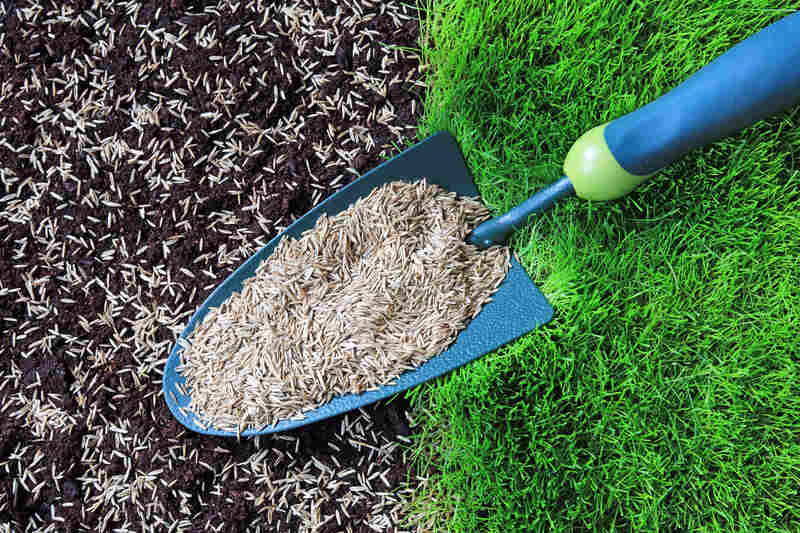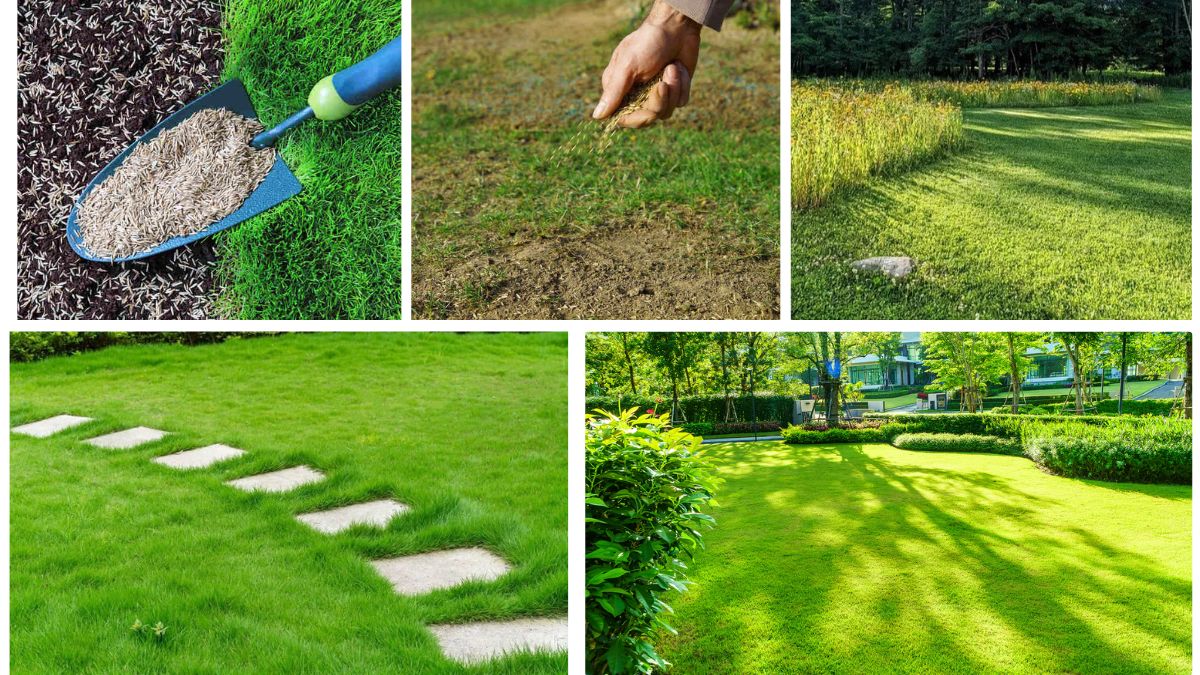A lush, green lawn is one of the most inviting features of any outdoor space. However, over time, even the healthiest lawns may develop bare patches, thinning areas, or uneven growth due to heavy foot traffic, pets, harsh weather, or poor soil conditions. Instead of starting from scratch, one of the easiest and most cost-effective ways to revive your lawn is by overseeding—planting grass seed directly on your existing lawn.
This guide will walk you step by step through the process of overseeding, covering preparation, seeding, care, and maintenance. Whether you’re a beginner or an experienced gardener, you’ll find these tips helpful in creating a thicker, greener, and healthier lawn.
Why Plant Grass Seed on Existing Lawns?

Overseeding offers several benefits:
- Thicker Growth – New grass fills in thin or patchy spots, giving your lawn a fuller look.
- Improved Lawn Health – Fresh seedlings help crowd out weeds and resist pests.
- Enhanced Color – Overseeding rejuvenates the green vibrancy of your yard.
- Increased Durability – A dense lawn is more tolerant of foot traffic and extreme weather.
- Soil Protection – Healthy turf prevents soil erosion and improves nutrient cycling.
Step 1: Choose the Right Grass Seed
The first step is selecting the correct type of grass seed for your climate, lawn conditions, and existing grass.
- Cool-Season Grasses (for northern regions): Kentucky bluegrass, fescue, and ryegrass thrive in cooler climates.
- Warm-Season Grasses (for southern regions): Bermuda, Zoysia, and St. Augustine prefer hot, sunny environments.
- Shade-Tolerant Grasses: Fine fescues and certain ryegrass blends are ideal for partially shaded yards.
Tip: Choose a seed mix that complements your current lawn to ensure a seamless look.
Step 2: Prepare Your Existing Lawn

Preparation is the most important step for successful overseeding. If the soil and turf are not ready, seeds may fail to germinate.
- Mow the Lawn Low – Cut your grass shorter than usual (around 2 inches) to allow seeds to reach the soil. Bag the clippings instead of mulching to reduce competition.
- Rake and Remove Debris – Use a rake or dethatcher to clear out leaves, twigs, and thatch (a layer of dead grass). Thatch thicker than ½ inch can prevent seeds from making soil contact.
- Loosen the Soil Surface – Aerate the soil using a lawn aerator or garden fork. Aeration creates holes that allow air, water, and nutrients to penetrate deeper. This step is particularly important for compacted soil.
- Fertilize the Soil – Apply a starter fertilizer high in phosphorus to encourage strong root growth.
Tip: Soil testing before overseeding can help you adjust pH and nutrient levels for optimal growth.
Step 3: Spread the Grass Seed
Once the lawn is ready, it’s time to apply the seed.
- Use a Broadcast or Drop Spreader – A spreader ensures even seed distribution across your lawn.
- Apply in Two Directions – Spread half of the seed while walking north-to-south, and the other half east-to-west. This prevents missed spots.
- Rake Lightly – After spreading, lightly rake the lawn to ensure good seed-to-soil contact. Seeds should be no deeper than ¼ inch into the soil.
- Topdress with Compost (Optional) – A thin layer of compost or peat moss (no more than ¼ inch) can protect seeds from birds and keep moisture in.
Step 4: Watering the New Seeds

Consistent watering is crucial for seed germination and establishment.
- First 2 Weeks – Water lightly 2–3 times daily to keep the soil consistently moist but not soggy.
- Weeks 3–4 – Reduce watering to once daily as seedlings begin to sprout.
- After 1 Month – Water deeply 2–3 times per week to encourage strong root growth.
Tip: Water early in the morning to minimize evaporation and prevent fungal diseases.
Step 5: Care After Germination
After your seeds sprout, ongoing care ensures they grow into a healthy lawn.
- Mowing – Wait until the new grass reaches about 3–4 inches before mowing. Always use sharp mower blades to avoid pulling seedlings.
- Fertilizing – Apply a balanced fertilizer (nitrogen, phosphorus, potassium) after 4–6 weeks to support continued growth.
- Weed Control – Avoid applying herbicides until the new grass is well established (at least 8 weeks). Overseeding naturally helps crowd out weeds.
- Foot Traffic – Limit walking or playing on the lawn for the first month to protect delicate seedlings.
Common Mistakes to Avoid

- Skipping Soil Preparation – Seeds won’t grow if they can’t touch soil.
- Overwatering or Underwatering – Both extremes can kill seedlings. Maintain steady moisture.
- Using the Wrong Seed – Grass types not suited for your climate may fail to thrive.
- Mowing Too Early – Cutting grass before it establishes can uproot young seedlings.
- Neglecting Fertilizer – New grass requires nutrients for strong roots and resilience.
Seasonal Timing for Overseeding
The best time to plant grass seed depends on your region and grass type:
- Cool-Season Grasses – Early fall (September–October) is ideal, as soil is warm but air is cool, giving seeds time to grow before winter. Spring is the second-best option.
- Warm-Season Grasses – Late spring to early summer (April–June) is best, as seeds germinate quickly in warm soil.
Tip: Avoid extreme heat or cold, which stresses seedlings and reduces germination.
Long-Term Lawn Maintenance

Once your overseeding project is successful, maintaining your lawn ensures it stays thick and green year after year.
- Regular Watering – Deep, infrequent watering encourages deep roots and drought tolerance.
- Aeration Every Year – Prevents soil compaction and promotes healthy growth.
- Seasonal Fertilization – Feed your lawn 3–4 times a year with a fertilizer suited to your grass type.
- Pest and Disease Monitoring – Watch for signs of grubs, fungus, or weeds and treat promptly.
- Proper Mowing Routine – Mow often enough to remove only ⅓ of the grass blade at a time.
Conclusion
Planting grass seed on an existing lawn is one of the simplest and most effective ways to rejuvenate your yard. By choosing the right seed, preparing the soil properly, and providing consistent care, you can transform thin, patchy turf into a lush, vibrant lawn. The key to success lies in preparation, patience, and maintenance.
Whether you’re tackling bare spots or simply want a thicker, greener yard, overseeding is a budget-friendly and rewarding method to keep your outdoor space looking beautiful year-round. With this step-by-step guide, even beginners can achieve professional-looking results.





